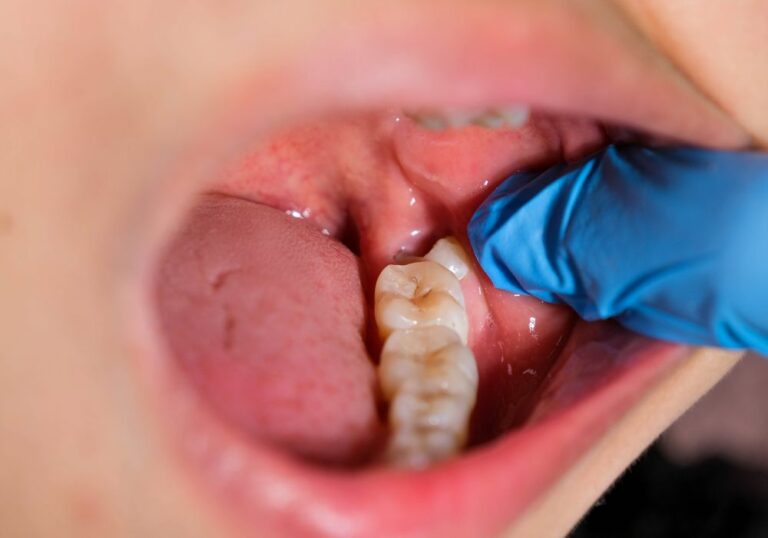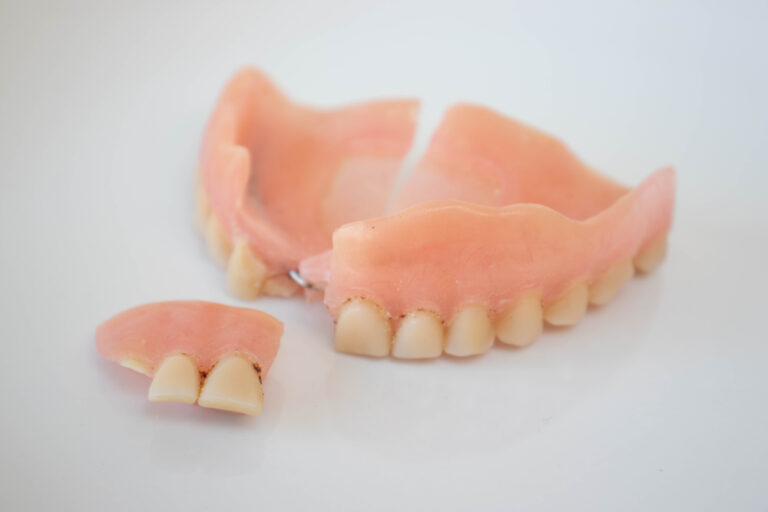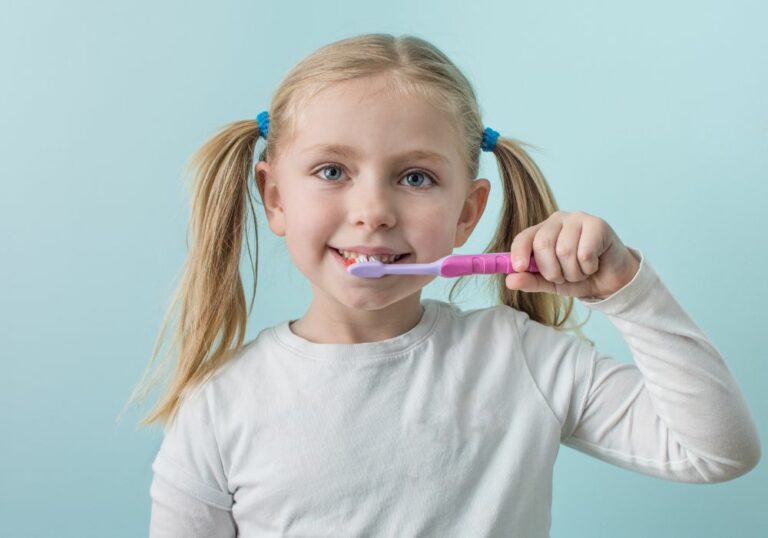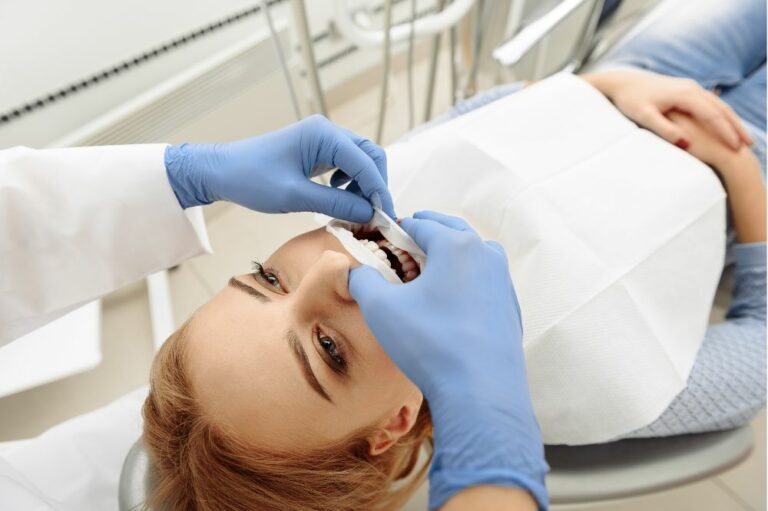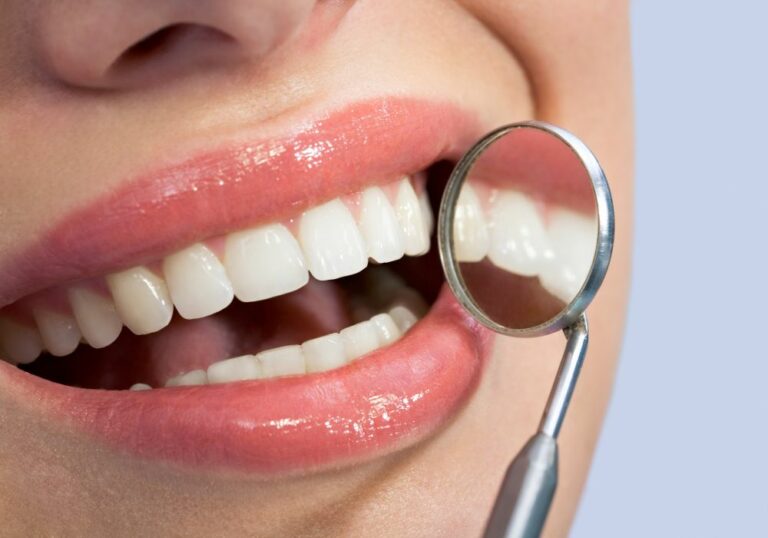As children grow, their baby teeth fall out to make room for permanent adult teeth. The front four top and bottom teeth – the central and lateral incisors – are usually the first adult teeth to erupt. However, in some cases, the permanent front teeth do not emerge on schedule. Several factors can cause delayed eruption or prevent the permanent front teeth from coming in properly.
Normal eruption timeline
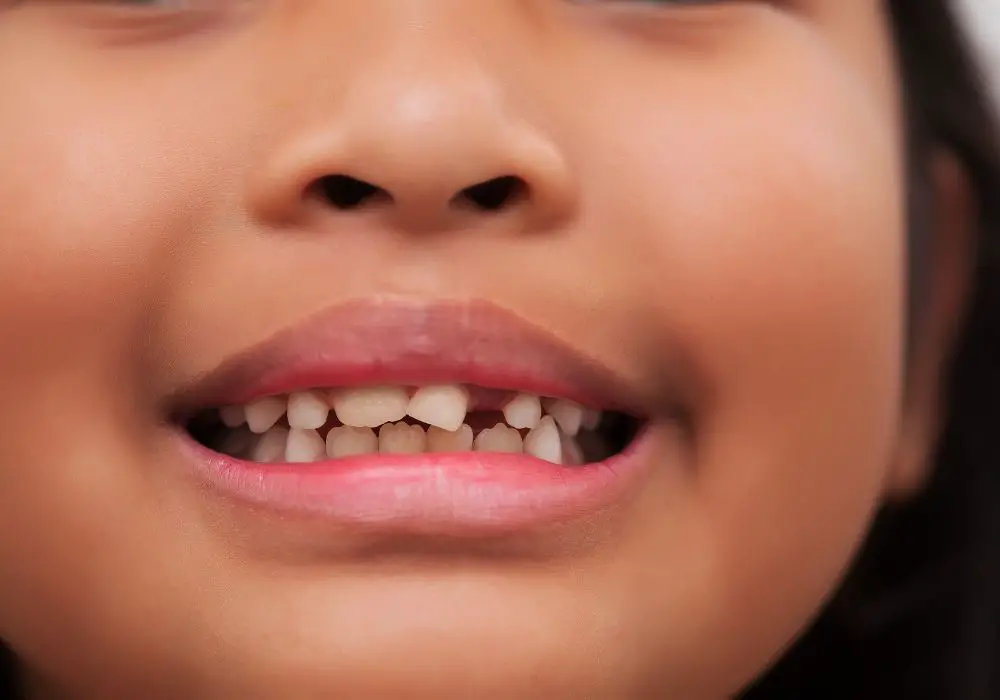
When do permanent front teeth normally come in?
The central incisors are the two front middle teeth on the top and bottom. They typically begin pushing through the gums (erupting) at around age 6-7. Specifically, the lower central incisors tend to erupt first between ages 6-7, followed by the upper central incisors around age 7-8.
The lateral incisors flank the central incisors and usually emerge around age 7-8. The upper lateral incisors tend to erupt before the lower laterals.
So most children get their permanent front four teeth – the upper and lower central and lateral incisors – between ages 6-8. However, the eruption timeline can vary by up to 18 months in either direction and still be considered normal.
Signs that permanent teeth are coming in
As permanent teeth get ready to erupt, parents may notice these signs:
- Wiggling and loosening of the baby teeth as the permanent teeth push up from below. The baby teeth roots dissolve to allow the permanent teeth to take their place.
- Swelling, bumps or puffiness behind the baby teeth where the permanent teeth are erupting.
- The tips of permanent teeth may partially emerge behind the baby teeth before the baby teeth fall out. A grayish or yellowish color may show through the gums.
- Increased drooling and chewing motions as the child works to relieve discomfort from erupting teeth.
- Irritability, fussiness and biting or rubbing of the gums from eruption pain and inflammation. Acetaminophen or teething rings can help soothe symptoms.
- An open bite, where the back teeth contact but the front teeth don’t touch, as the permanent front teeth push forward.
Delayed eruption causes
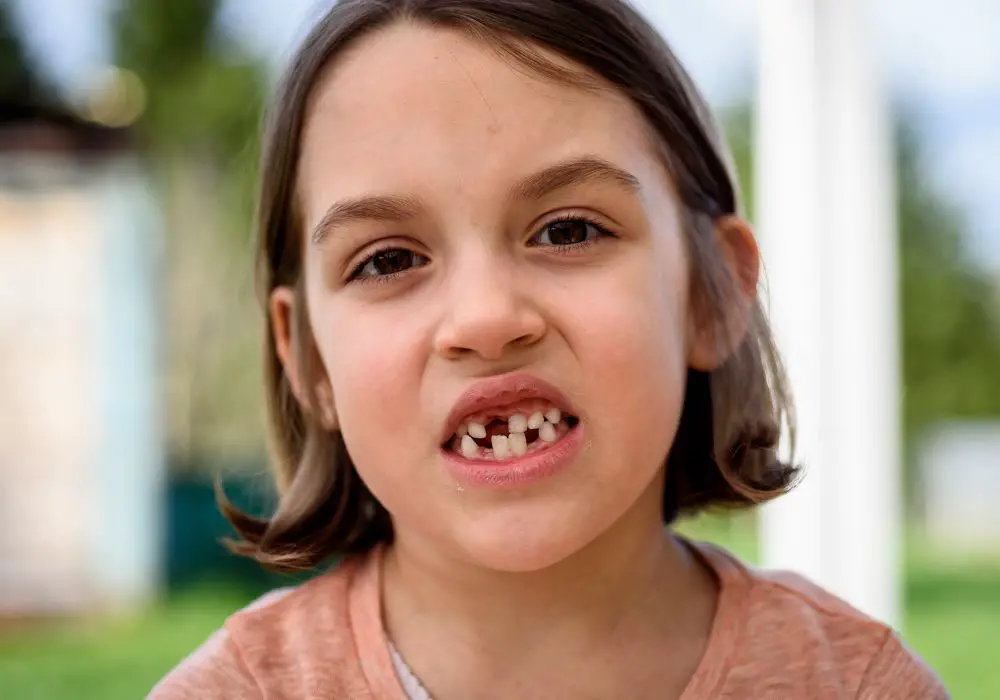
While most permanent teeth emerge on a predictable schedule, many factors can disrupt or delay the process. Common reasons permanent front teeth may be late include:
Lingering baby teeth
Sometimes baby teeth are slow to shed and continue occupying space, blocking the permanent teeth from erupting. This delayed resorption of primary tooth roots often occurs when:
- Baby teeth have abnormally long, excessively curved or dilacerated roots that take longer for the permanent teeth to dissolve and resorb.
- Permanent teeth are blocked from erupting fully into position due to crowding, lack of space, or malposition of other teeth. The permanent teeth may try to emerge but remain trapped under the gums.
- Previous injury or trauma to the baby teeth damages the root development and resorption process so they persist too long.
- Metabolic or nutritional disorders impair the root resorption process.
Crowding
Lack of space in the jaw due to crowding or overcrowding prevents permanent teeth from erupting properly. When this occurs:
- Multiple permanent teeth may become blocked, impacted or delayed beneath the gums.
- Permanent teeth have difficulty erupting and emerge at odd angles or get stuck between other teeth.
- Permanent teeth may partially erupt but remain trapped behind the baby teeth since there is no room to fully emerge.
Genetic factors
In some cases, genetics leads to delayed development and maturation of permanent teeth, or inadequate jaw size to accommodate all the permanent teeth:
- Rare hereditary conditions like cleidocranial dysplasia or Gardner’s syndrome affect bone and tooth development, altering eruption patterns.
- Children who inherit delayed formation of permanent teeth or jaws too small to allow teeth to align may experience crowding problems.
- Cleft lip and palate can impair eruption.
Systemic illness
Serious childhood illnesses or nutritional deficiencies can impair tooth formation and disrupt eruption timing. Examples include:
- Endocrine or hormonal disorders like hypothyroidism, hypopituitarism or growth hormone deficiency.
- Head and neck radiation therapy or chemotherapy for cancer treatment.
- Malnutrition, poor diet, digestive disorders like celiac disease, or vitamin D deficiency.
Orthodontic factors
Problems with jaw growth, prior orthodontic treatment, or habits like thumb-sucking may interfere with permanent teeth coming in:
- Underbite or overbite can prevent proper tooth alignment and eruption.
- Palatal expanders, braces, Invisalign or other appliances may delay eruption.
- Prolonged thumb-sucking or pacifier use beyond age 3-4 may alter jaw growth and protrude front teeth, preventing space for permanent teeth.
Trauma
Injury to the mouth and teeth can damage developing permanent tooth buds beneath the gums, leading to missing, malformed or late teeth. Common causes of trauma include:
- Falls or sports accidents impacting the teeth.
- Car accidents or bike crashes resulting in facial and dental injuries.
- Child abuse causing facial trauma.
- Complications from extractions or procedures damaging adjacent permanent tooth buds. For example, premature loss of primary incisors may damage successor permanent incisors.
When to see a dentist
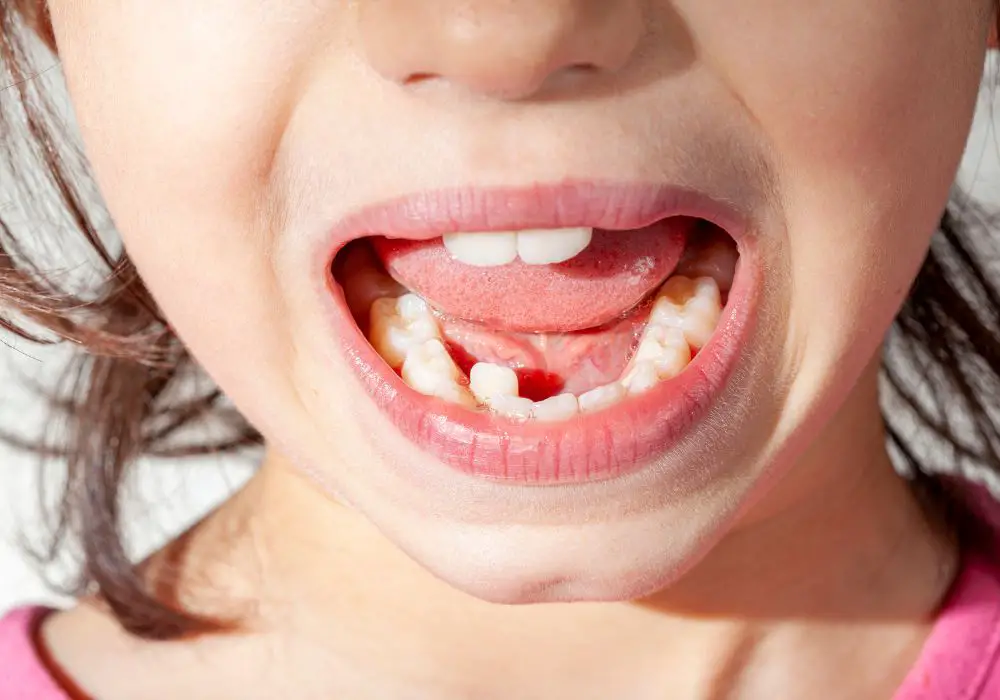
If a child’s permanent front teeth are not erupting by about age 7-8, it’s a good idea to have them evaluated by a pediatric dentist.
Signs that signal a dental visit is needed:
- Primary teeth become very loose but no permanent teeth are erupting underneath.
- Permanent teeth seem partially emerged but remain blocked and unable to fully erupt into place.
- Permanent teeth come in very crookedly due to crowding issues.
- Gum pain, significant swelling or sensitivity lasts for more than a few days.
- No signs of permanent teeth by age 8-9.
- An older child loses primary teeth but no permanent teeth erupt within 6-8 months.
Early diagnosis and intervention can minimize complications and achieve the best outcome if treatment is needed. The American Association of Pediatric Dentistry recommends that children see a dentist by age 1, and regular dental visits every 6 months thereafter.
How dentists manage delayed eruption
Several treatment options can help expose blocked permanent teeth or create room for eruption:
Removing baby teeth
Extracting persistent primary teeth is often the first step to allow permanent teeth to erupt if they are blocking or impeding eruption. This eliminates the physical barrier and frees up space.
Surgical exposure techniques
If crowding fully blocks the permanent teeth from erupting, the gums above the buried teeth may be opened surgically to expose the teeth. This is called a surgical exposure. It’s done under local anesthesia and involves lifting up a small flap of gum, removing any gum or bone covering the permanent tooth. The exposed tooth can then gradually finish erupting on its own or be orthodontically guided into place.
Dental expanders
Expanders are appliances fitted to the upper jaw that gently create more space in the mouth and palate. This can help crowding and allow impacted permanent teeth to fully erupt. Types of expanders include palatal expanders, rapid palatal expanders, and lingual arch expanders.
Selective extractions
Removing certain malposed or problematic permanent teeth can help guide other permanent teeth into better alignment and enable eruption into the newly opened space.
Observation
If no primary teeth appear to be blocking or obstructing the permanent teeth, a dentist may opt to observe and monitor the situation for a period before intervening. Some delayed teeth naturally erupt over time as more space opens up from other teeth coming in.
What if permanent teeth still don’t erupt?
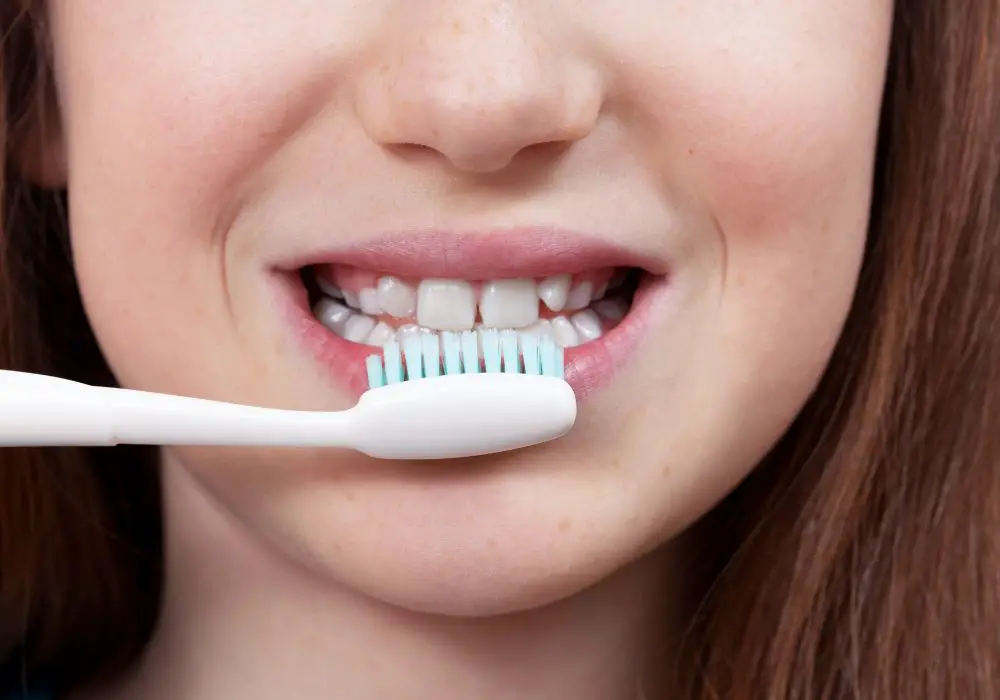
If the permanent teeth still fail to emerge into proper position with early treatment, the dentist may recommend:
- Further surgical exposure and bonding an attachment to bring the stubborn teeth down.
- Dental implants to replace missing permanent teeth that will not erupt.
- Orthodontic traction using braces to very gradually help pull impacted teeth down into the arches.
- Autotransplantation – surgically removing impacted teeth and reimplanting them into the correct position.
- Prosthetics like dentures or bridges later in life to replace any permanent teeth that remain unerupted.
The key is proper timing – the goal is to intervene and make space before the child’s jawbone growth is complete. Working with both a pediatric dentist and orthodontist provides the most coordinated care and best outcome.
Frequently Asked Questions
How late is too late for permanent front teeth to come in?
Most permanent front teeth erupt by age 8. If there are no signs by age 10-12, it’s considered late. Seek evaluation for missing permanent teeth by age 7-8 to have the best options for bringing them in properly.
Can teeth come in later due to COVID delays?
Yes, some children have experienced eruption delays of 3-6 months during the COVID-19 pandemic due to dental office closures and interruptions in routine care. However, most teeth that were slightly delayed due to lockdowns end up catching up on their own.
What if only one permanent tooth is delayed?
A single late tooth could signal a localized problem versus overall delayed development. Possible causes include past injury, trauma, crowding or an obstruction like a cyst. The dentist can identify the issue and treat the affected tooth with x-rays and examination.
Do permanent teeth eventually erupt on their own?
Teeth delayed due to minor crowding may slowly emerge over several years as other teeth come in to guide them down. But significantly impacted or blocked teeth won’t spontaneously erupt without intervention. Monitoring helps determine if treatment is needed.
How are severely impacted front teeth brought down?
For stubborn impacted front teeth, surgical exposure is first done to uncover the crown. Then orthodontic traction appliances like braces with elastic threads are used to very gradually pull and align the tooth into place over several months. This technique should be done before jaw growth is complete.

